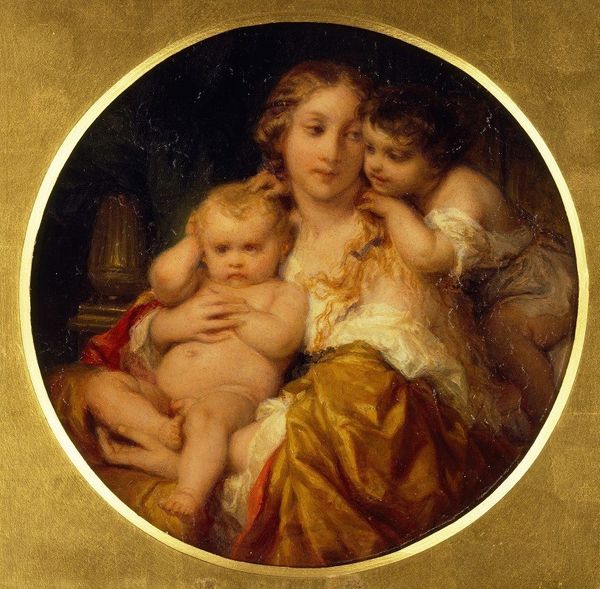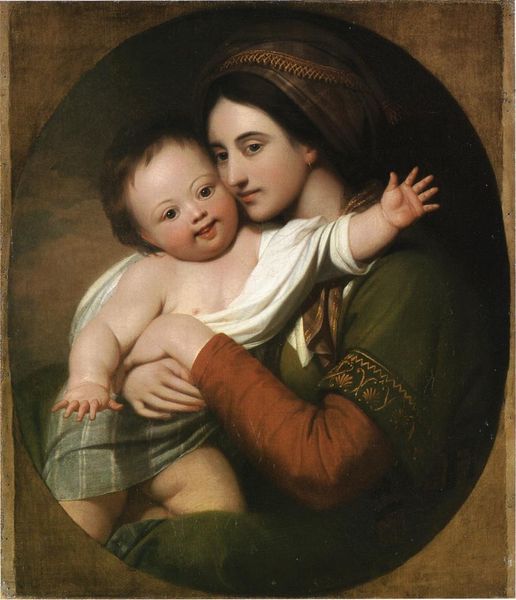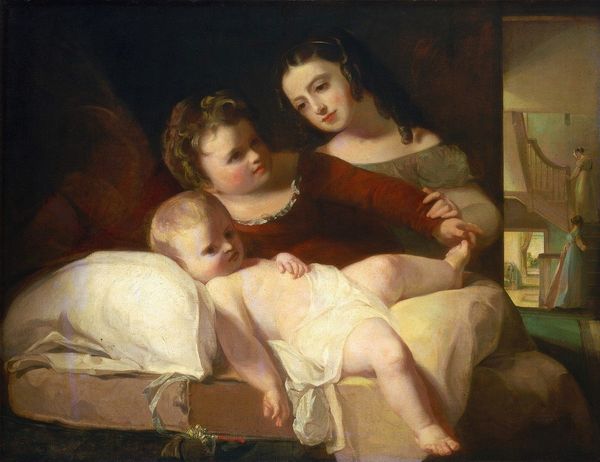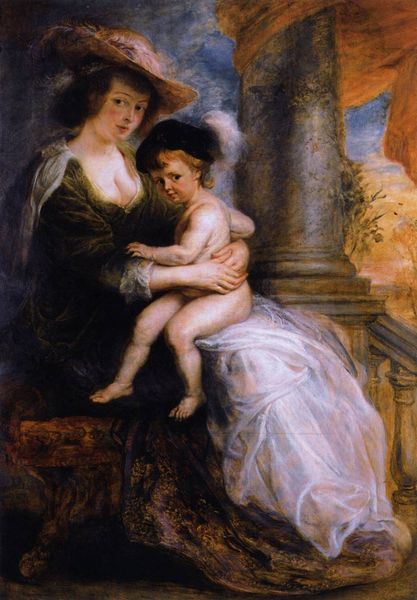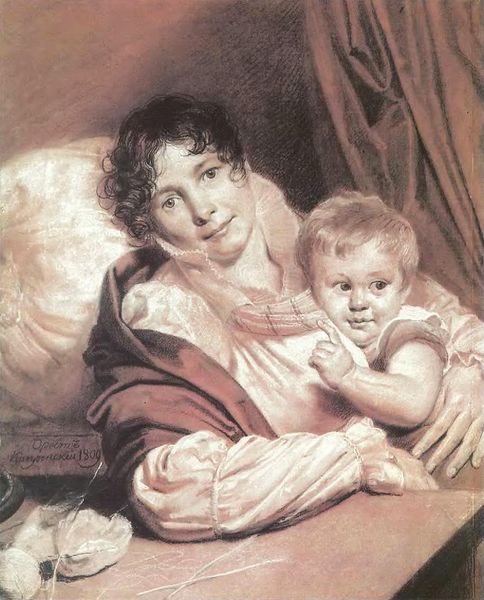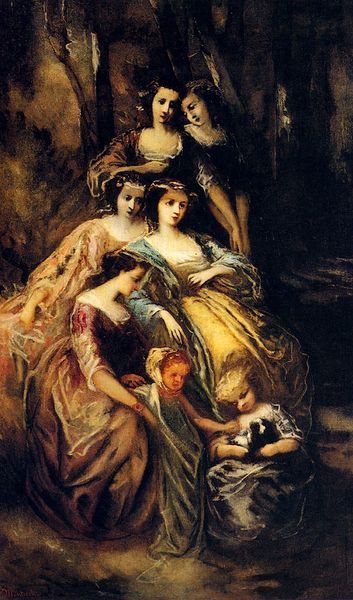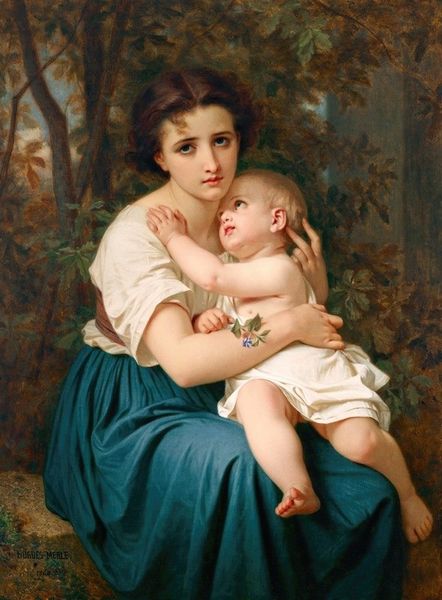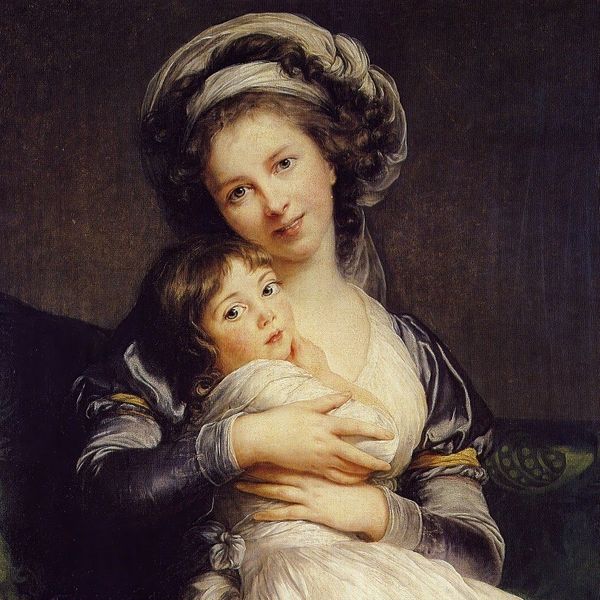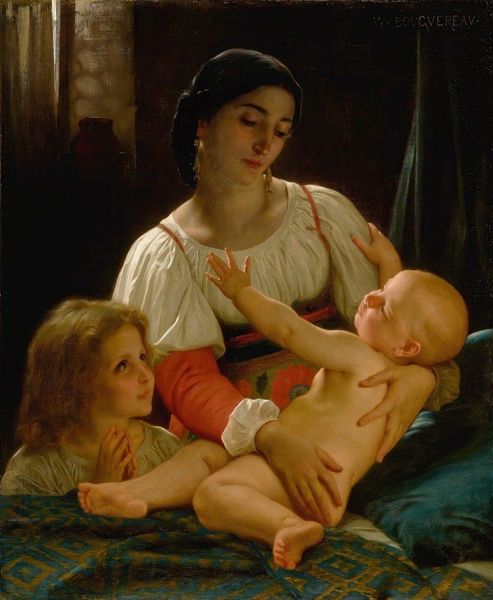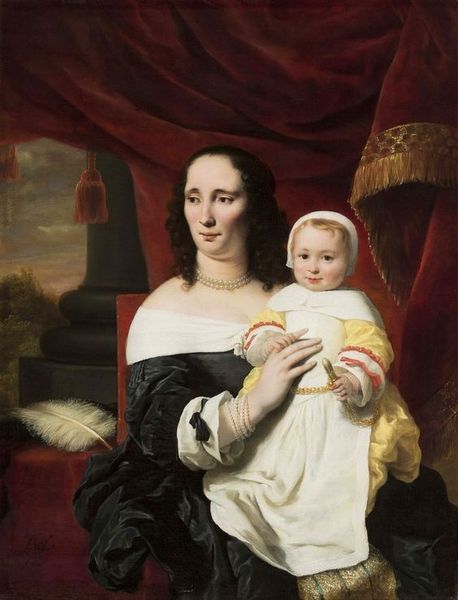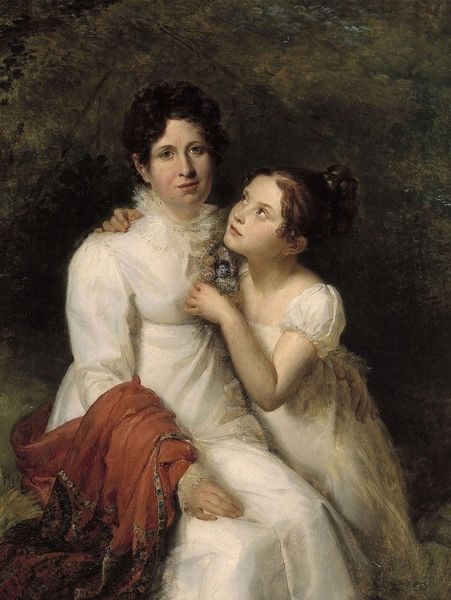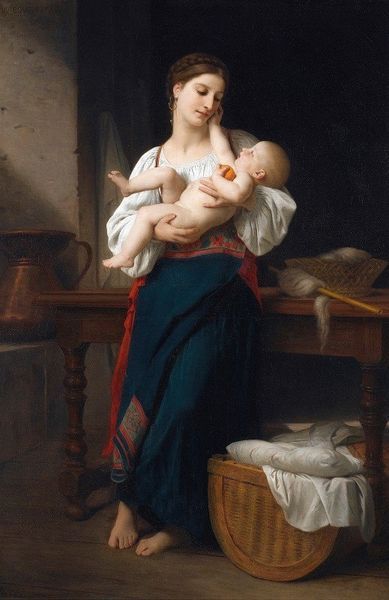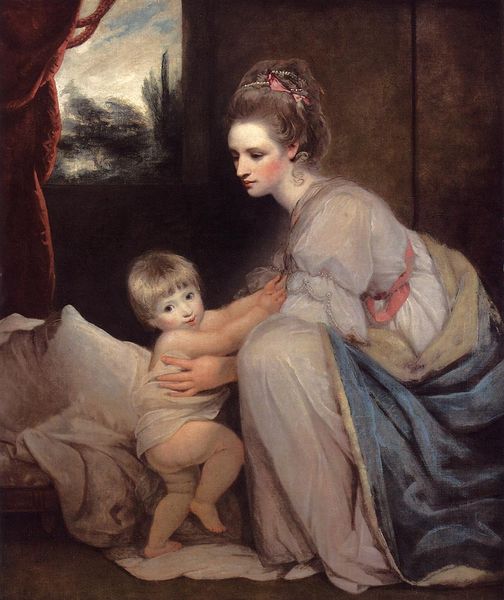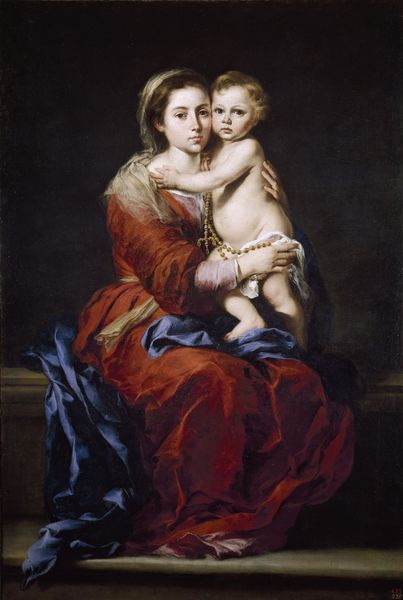
The Childhood of Pico della Mirandola 1842
0:00
0:00
pauldelaroche
Musée des Beaux-Arts de Nantes, Nantes, France
painting, oil-paint
#
portrait
#
narrative-art
#
painting
#
oil-paint
#
figuration
#
romanticism
#
genre-painting
#
history-painting
#
academic-art
Dimensions: 116 x 76 cm
Copyright: Public domain
Editor: This is Paul Delaroche's "The Childhood of Pico della Mirandola," painted in 1842. The oil on canvas shows a Madonna-like figure with a young child in her lap. The painting has a very idealized, romantic feeling, but also seems to be steeped in historical reference. What do you see in this piece beyond the obvious sentimentality? Curator: What strikes me is how Delaroche uses history painting, specifically the idealized image of motherhood, to engage with prevailing 19th-century societal ideals. Consider the historical context: the rise of the bourgeoisie and their emphasis on domesticity and family values. The woman's dress, styled after Renaissance fashion, and the opulent setting certainly reference the historical Mirandola. But what does it tell us about the period in which it was painted? Editor: So, the choice of subject, a mother and child, connects with the era's focus on domesticity? Curator: Precisely. It idealizes not just motherhood but also a certain model of female education and influence. The book the mother holds—symbolic, no doubt, of knowledge and virtue—suggests the important role women played, at least according to the dominant ideology, in shaping young minds. Think about how this representation may or may not have challenged or reinforced gender roles at the time. The image also serves as a national narrative during a period of social upheaval. Editor: That’s a great point about the reinforcing of gender roles. Curator: Delaroche seems to be giving viewers something palatable and visually stunning that also subtly upholds specific values tied to family and nationhood. A work that might prompt a viewer to look both backward to Renaissance iconography and forward toward contemporary theories about women’s roles and access to political enfranchisement. Editor: I now see how loaded the symbolism is beneath the surface. Thank you! Curator: Indeed. It's a good reminder that even seemingly straightforward depictions of the past are deeply engaged with the present.
Comments
No comments
Be the first to comment and join the conversation on the ultimate creative platform.
